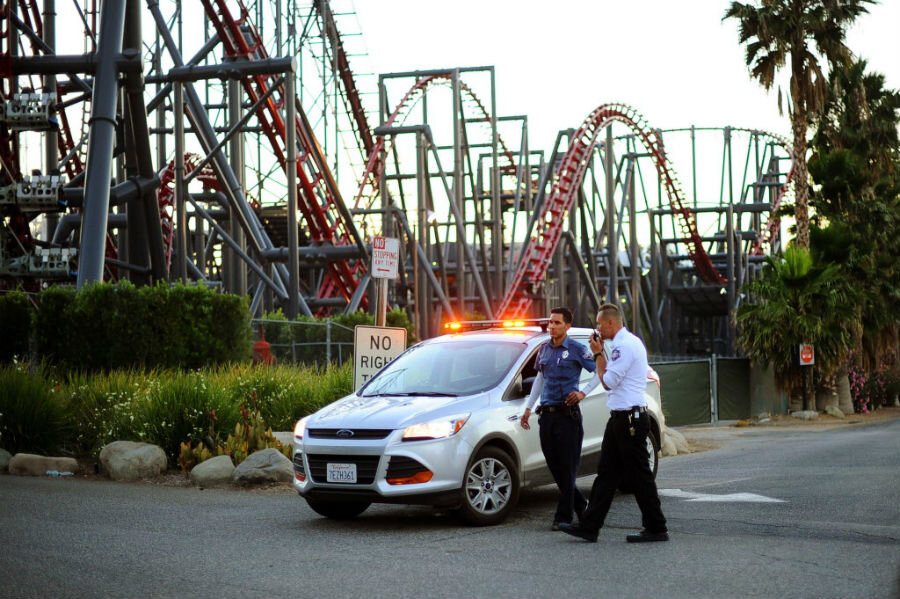Six Flags roller coaster accident: How frequent are amusement park injuries?
Loading...
Thrill-seekers at a southern California Six Flags amusement park got more than they bargained for Monday when a pine tree fell on the track of a roller coaster, injuring four people and leaving nearly two dozen others hanging 20 to 30 feet in the air for several hours.
“We were going across one turn and all of a sudden a loud noise happened,” Jeremy Ead, one of the injured riders, told CBS Los Angeles.
The front car of the Ninja coaster at Six Flags Magic Mountain in Valencia, Calif., became dislodged after colliding with a branch lying atop the tracks shortly after 5:30 p.m. Monday. It took rescue crews three hours to evacuate the 22 riders, one at a time, from the coaster.
Two passengers were taken to a nearby hospital as a precautionary measure and all the injuries were minor, officials said.
Unlike traditional roller coasters, the cars of the Ninja coaster dangle below the track from a cable. The Six Flags website describes the ride as “The Black Belt of Roller Coasters.”
"You’re hanging from the track, which on this insane ride is above your head,” the description reads. “Shoulder harnesses secure you in place but don’t expect to just sit in one place – you’re going to be swinging all over, a full 90 degrees each way.”
That may be fun, but patrons were not amused to be left dangling.
“It took about 45 minutes to get any kind of a response,” Mr. Ead told CBS Los Angeles, adding that he would not be returning to Magic Mountain. “We just want to get out of here.”
Park officials have closed the ride temporarily while the track undergoes maintenance and inspection.
Accidents at southern California amusement parks are relatively rare, a 2013 Los Angeles Times investigation of theme parks found.
The Times staff combed through more than 2,000 accident reports filed at 57 area parks between 2007 and 2012. Nearly one-fifth of those reports related to motion sickness. About 350 injuries occurred each year during the six-year period covered in the investigation. That’s a relatively small number compared with the total combined attendance of 40 million visitors each year.
Nationally, the number of injuries per million attendees has been steadily dropping since 2001, according to a survey of fixed-site ride injuries across the United States between 2001 and 2011, conducted by the National Safety Council's Research & Statistical Services Group in Itasca, Ill. The survey found that in 2011, about 4.3 people per million park visitors received injuries, compared with an average of 8.2 per million visitors in 2001.
While amusement park injuries are relatively rare, in some cases they have been deadly. In the most recent US incident, a woman died after falling out of a Six Flags roller coaster in Arlington, Texas, in July 2013, according to USA Today.
• This report includes material from The Associated Press.






